2018 ADVENTURES OF ODYSSEUS by MDM Deutsche Munze
After the nine-coin Norse Gods series released in 2016 and the excellent Roman Gladiators series in 2017, MDM have launched a new ten-coin set for 2018 with the similar setting of the classical ancient world. Instead of featuring gods or types of gladiator, this set follows the story of the legendary Greek hero, Odysseus. His exploits are depicted over the course of the set, each one showing one of the tales laid out by writers of the day. Hugely popular in the Greek world, he was generally despised by the Romans because of his duplicitous nature and percieved lack of honour.
No changes to the specification – these are antique-finished, high-relief, two-ounce fine silver coins. The extra weight over a standard one-ounce coin has gone solely to thickness, an aspect we weren’t keen on before and aren’t here. We’d much rather the extra weight had gone to increasing the diameter of the coin to 50, or even 55 mm instead of the standard 38.6 mm employed here, but it isn’t a huge drawback and the designs remain first class regardless.
The artistic style in use here will be instantly recognisable to buyers of the earlier series, and it’s an eclectic and attractive one. Using an unusual mix of strange perspectives and changing scales, these are hardly realsitic depictions of the, admittedly mythological events, and they’re all the better for it. Very well done designs and we’re pretty sure the work of the same artist as the gladiator set, and likely the Norse god set as well. Each sits within a border and there’s a very neat, almost privy-like depiction of the two faces of a silver tetradrachm called the ‘Owl of Athena’.
The obverse is common to the set and as they’re issued for the Solomon Islands, they carry the effigy of Queen Elizabeth II in the centre, surrounded by the usual inscriptions (“ELIZABETH II” – the name of the Queen, “5 DOLLARS” – the face value, “SOLOMON ISLANDS” – the issue country, “2018” – the year of issue and “2 OZ Ag 999” – the weight of the coin and the fineness of the Silver.). Struck by BH Mayer in Germany, the quality is likely to be top-notch. Each coin is available individually packaged, so you can freely pick a single coin you like if you so wish, or as a complete set of ten in a big wooden box. A great set, we think.
ATTACK OF THE CICONES
After the Trojan War, Odysseus first sails with his 12 ships to the land of the Cicones in Thrace. Here, he and his companions carry out a raid on the Cicones of Thrace, who were allies of the Trojans, but are driven back by them.
As the ships are rounding Cape Malea on their way to Ithaca at the southern tip of the Peloponnese, a strong northerly wind springs up and drives them past the island of Cythera into the open sea.
THE LAND OF THE LOTOPHAGI
After fighting the Cicones, Odysseus and his companions arrive in the land of the friendly Lotophagi, they and their ships having been driven there by a tyerrible storm lasting several days.
Although the Lotophagi turn out to be friendly – probably as a result of their lotus-eating habits, which stupefy their hearts and minds – Odysseus soon wants to travel on. His companions, who havbe eaten of the fruits of the lotus and been intoxicate dby it, want to stay with the Lotophagi. Odysseus has to drag them away by force.
THE DEFEAT OF POLYPHEMUS
Odysseus and his companions then land on an island inhabited by many wild goats. The next day they sail to the nearby opposite coast, which is peopled by giants – the Cyclopes. One of them, the one-eyed Polyphemus, captures Odysseus and twelve of his companions when they enter his cave.
Since the Greeks are not strong enough to move the rock with which Polyphemus has blocked the cave entrance, thay are unable to kill him, but have to resort to cunning. When asked by Polyphemus what his name is, Odysseus makes a play on words and calls himself ‘Nobody’. He suceeds in making Polyphemus drunk and blinding him with a red-hot stake.
When, on hearing Polyphemus’ cries of pain, other Cyclopes come running up, Polyphemus calls to them that ‘Nobody’ has done something to him, so they turn back. The men flee the next morning by hiding in a flock of sheep.
THE UNLEASHED STORM OF AEOLUS
The wind god Aeolus, on whose island Odysseus arrives next, gives Odysseus a leather bag containing all the winds to drive his ships safely to Ithaca.
But shortly before their arrival, Odysseus’ companions open the bag out of curiosity. The winds escape and drive the ships back to Aeolus’ island. Thereupon, Aeolus refuses them any further help.
THE ESCAPE FROM THE LAESTRYGONIANS
The ships then land on the island of Telepylos, on the coast of the Laestrygonians. The Laestrygonians turn out to be a savage people of man eating giants. They destroy the ships in the harbour by throwing huge boulders at them.
Only Odysseus’ ship remains unscathed, as it’s moored in a more protected place. With this sole remaining vessel, Odysseus saves himself and his surviving companions.
CIRCE AND ODYSSEUS
With his last ship, Odysseus reaches the island of Aerea, home to the goddess and sorceress Circe. On her estate are enclosures with tame lions and wolves, which in reality are people whom Circe has bewitched.
Circe also transforms half of Odysseus’ men, who had been sent to reconnoitre the island, into pigs with a magic potion. Thereupon, Odysseus goes to Circe alone and on his way meets Hermes, the messenger of the gods, who gives him the herb called moly. With its help, he resists Circe’s magic and forces her to return his companions to their human form.
THE STRAIT OF SCYLLA AND CHARYBDIS
As if all of their previous troubles had not been enough, on their way home Odysseus and his companions have to pass through further straits, which are guarded on one side by the six-headed, man-devouring Scylla, and on the other by Charybdis, who created a whirlpool.
Their ship has the good fortune of coming through, but they lose six men to Scylla.
THE CATTLE OF HELIOS
Their next stop is on the island of the sun god, Helios. Since the provisions given to them by Circe are running out, the men disobey their orders while Odysseus sleeps, and slaughter the sacred cattle of Helios.
This act of sacrilege is revealed when the skins of the beasts crawl around and the meat on the roastiong spit bellows. The punishment of the gods comes upon them in the shape of a storm that destroys their ship. Odysseus is the only survivor.
ODYSSEUS RETURN
Only seven years later does Odysseus finally return home. There, he finds his wife and his court beset by suitors, who are vying to take his place.
To help him, Athena gives Odysseus the appearance of a beggar. Odysseus reveals his true identity in an archery contest, and kills the suitors, as well as the maids and menservants who prove unfaithful. After nearly twenty years, Odysseus once again sets eyes on his wife, Penelope.
Packaging of the individual coins is of a good quality, understated and in a lightly themed shipper. Very similar to last years Roman Gladiators series, a polished wood box with a padded felt interior is also available to hold the entire set of ten coins. Finished in gloss black with a silver motif on the lid, both inside and outside, it appears to be a good quality item.





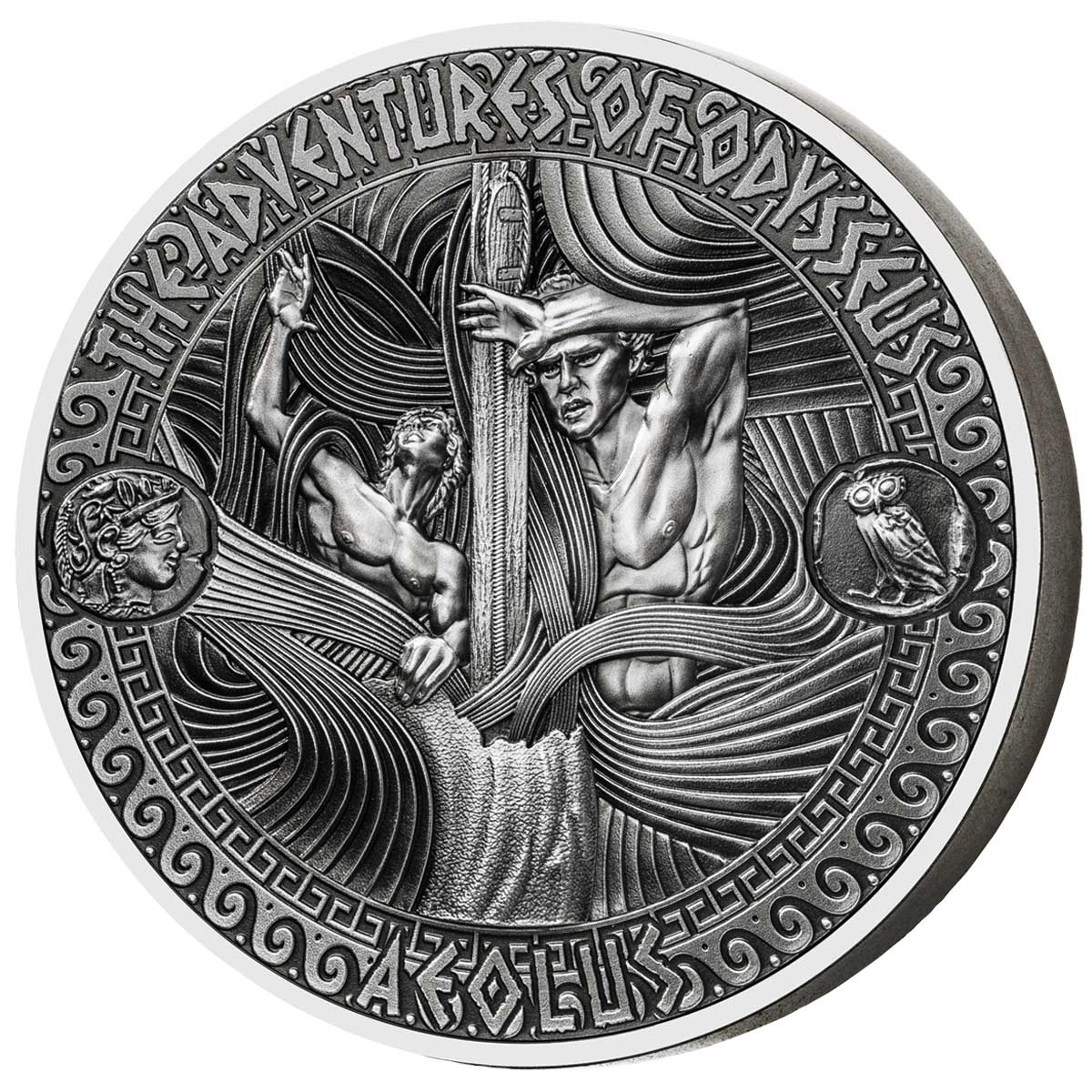

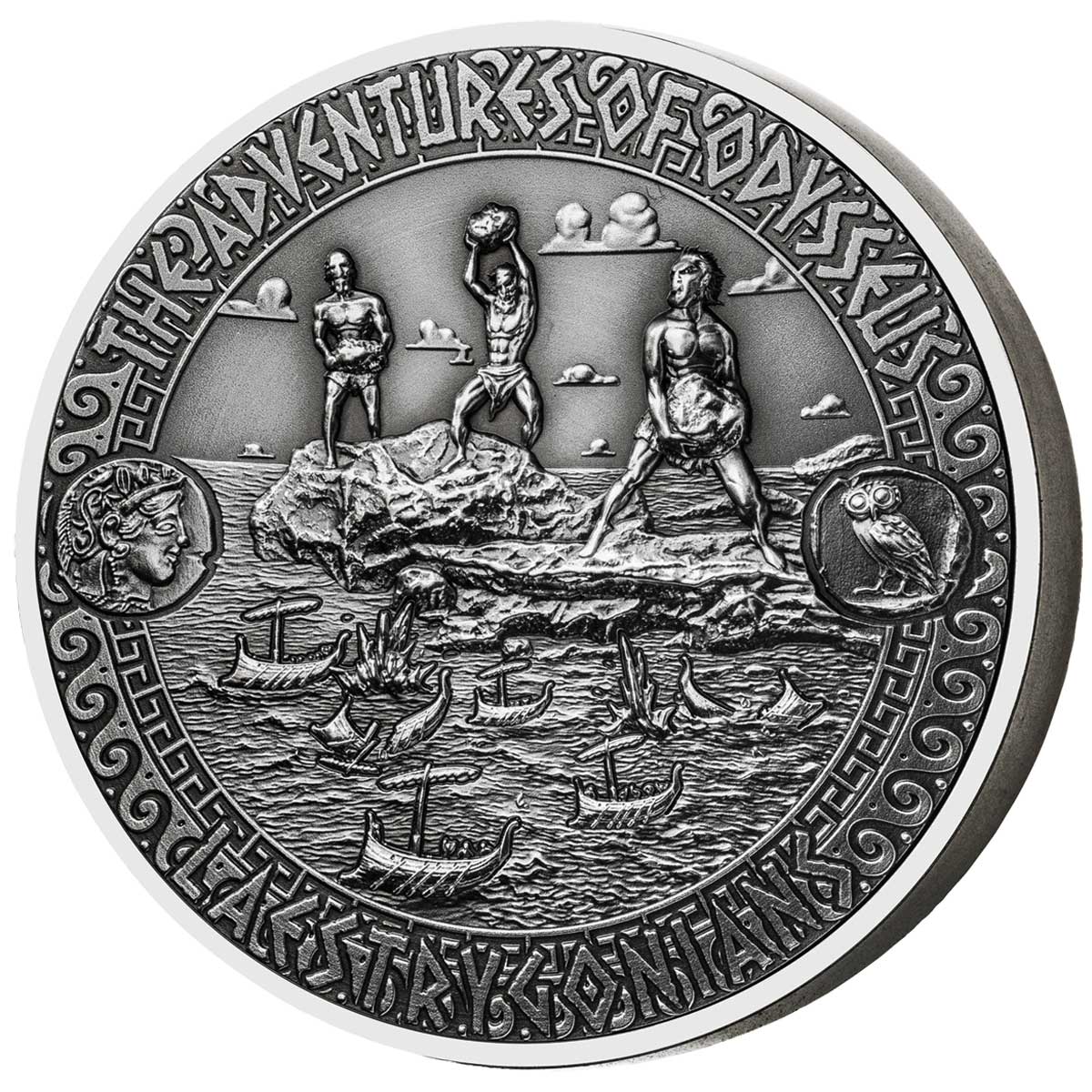



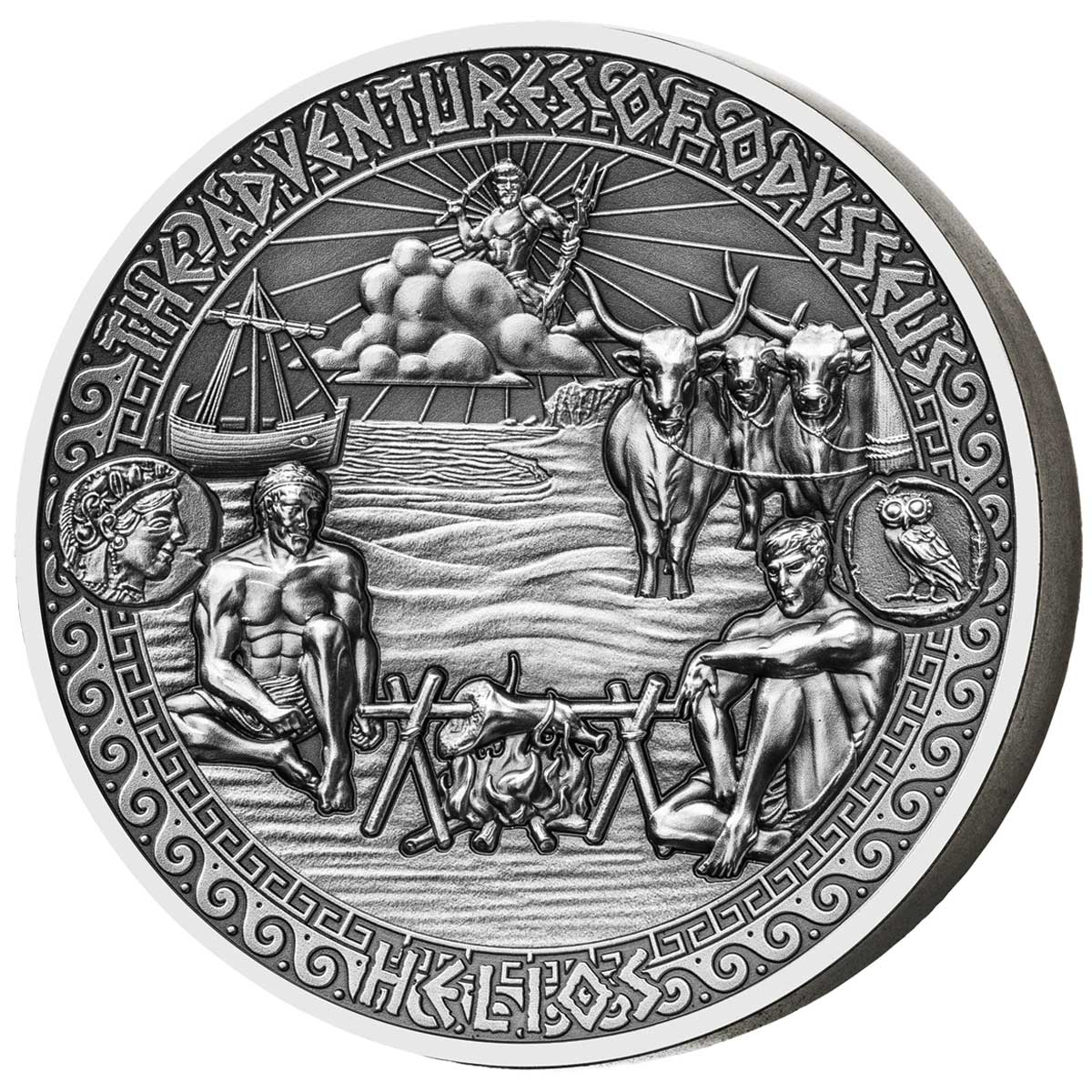
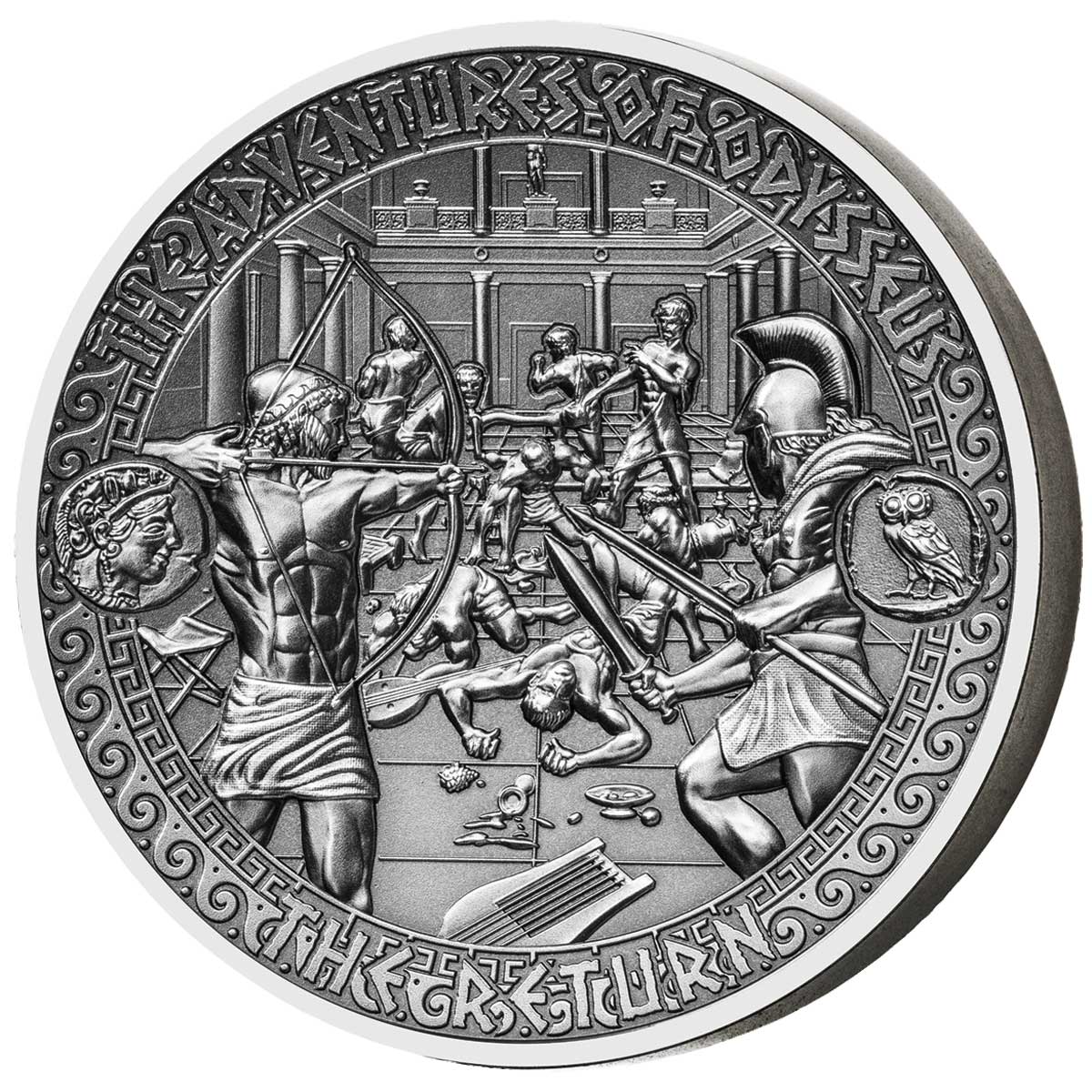

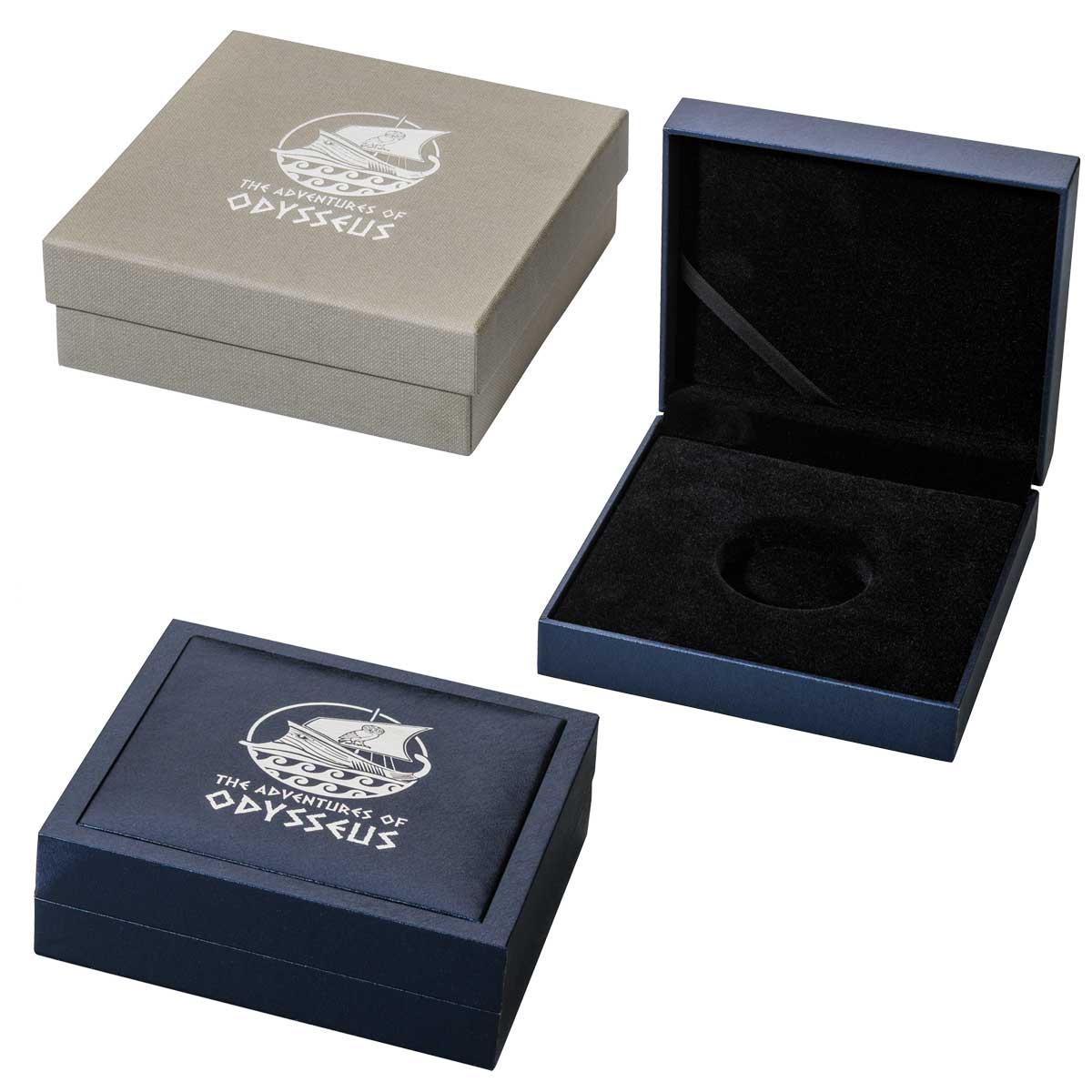
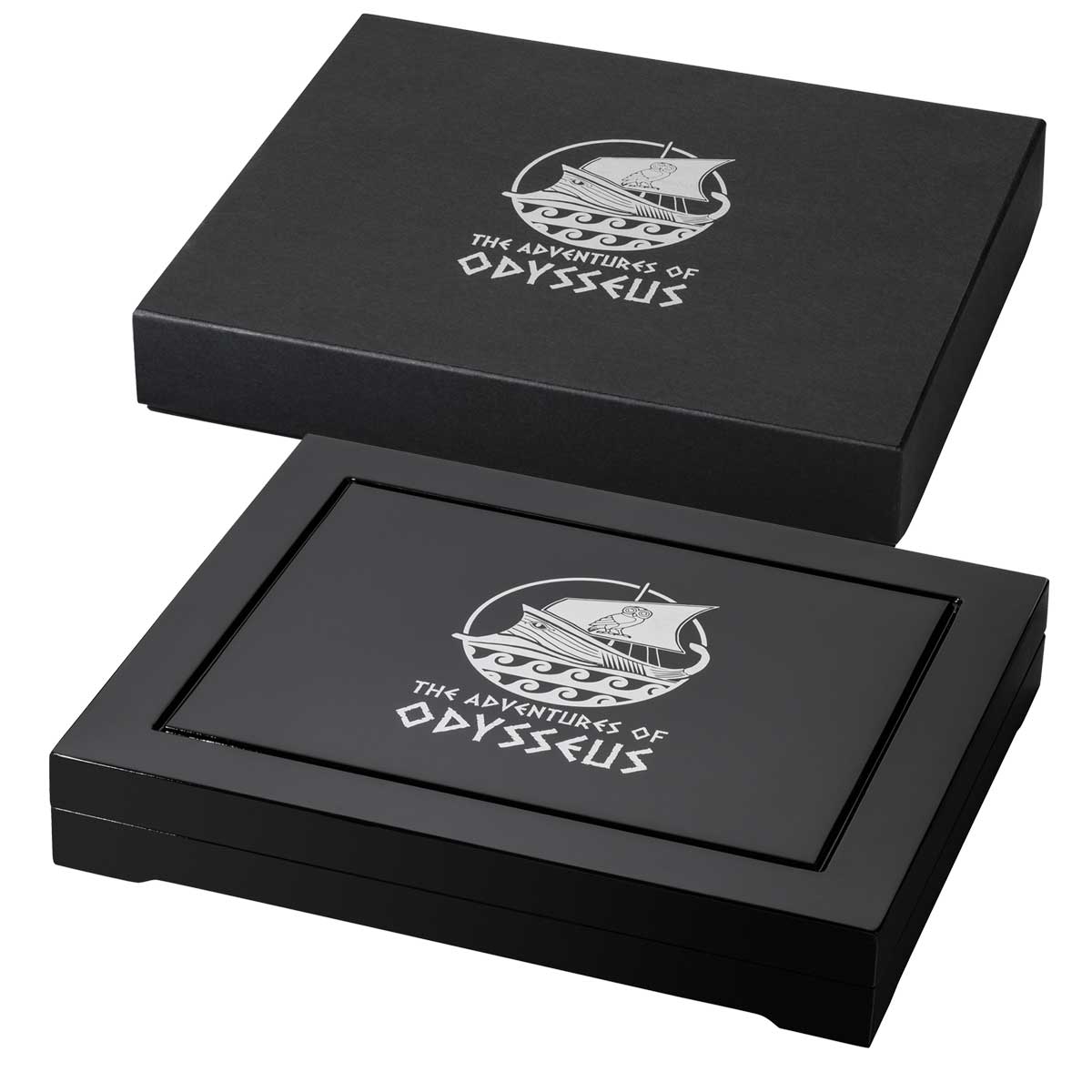

When will these be released? And will they be released all at once or in groupings?
They’ve all been released at the same time, Harry. Powercoin did have the set in a box (currently showing out of stock) and APMEX has them for sale individually.
Mik,Followed Your tip & purchased the whole set from Apmex. Great set-wonderfully imaginative &fascinating depictions of the adventures of Odysseus.
Nice one Harry. Did you get the box that holds them all, or the individual packaging?
I wanted the box,but it was not available,so I purchased each one in individual packaging. I had this same problem w/the Norse Gods series & wonder why the box is not more widely available. I can only assume that anyone purchasing the entire sets(either Norse Gods,Gladiators or Odysseus)would be interested in the convenience of a nice themed storage box,instead of individual boxes,which are clunkier & harder to store??
Mik,MDM texted me about the box(maybe),but it was all in German & I did not understand a word. Can you help bridge the language barrier? Maybe put me in touch w/someone at MDM who speaks English?
Leave it with me, Harry. I’m communicating with them now.
Thanks Mik.
Is it still possible to get box for this set and the gladiators?
Maybe for Odysseus but out for others. MDM had box & Mik helped w/language barrier.